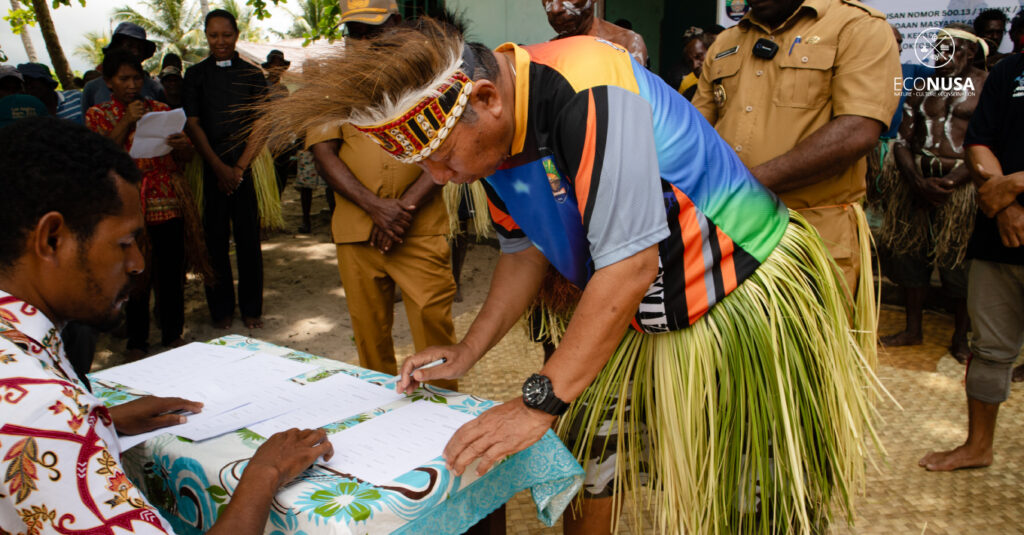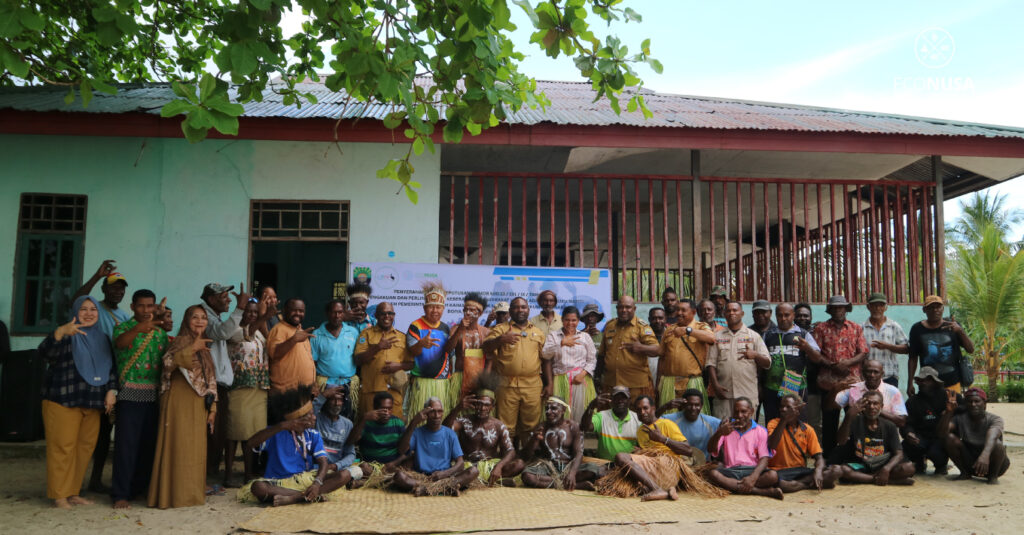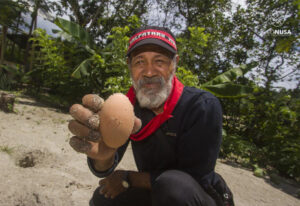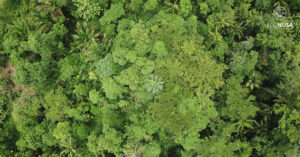
Tuesday, October 21, 2025, the shoreline of Lakahia Island was lively. Dozens of residents gathered, waiting for the arrival of Kaimana’s Deputy Regent, Isak Wariensi, who would hand over the Kaimana Regent’s Decree on the Recognition and Protection of the Existence of the Aara Indigenous Law Community of the Napiti Tribe. This decree marked the result of years of journey by the community to gain recognition of their rights.
When Deputy Regent Isak’s delegation arrived, the community welcomed them with the traditional Seka Kaimana dance. After the Napiti Tribal Chief, Frans Amerbay, delivered his welcoming remarks, Isak presented the decree of recognition.
“This recognition is true independence for the indigenous people. May this decree be used to preserve the customary territory for future generations,” said Isak. The officially recognized territory of the Aara Indigenous People (MHA Aara) covers 95,537.17 hectares, including 31,458.78 hectares of land and 64,078.39 hectares of sea.
Read Also: Aara Indigenous Community Proposes Recognition of Customary Land
A representative of the Napiti people, Melkianus Tenawe, expressed his gratitude to the government and pledged, on behalf of the community, to safeguard the territory in accordance with the mandate. He also gave special thanks to EcoNusa, which had continuously supported the Aara Indigenous People in their journey toward formal recognition by the local government.
“We hope EcoNusa will continue to assist us so that this officially designated customary land can be managed sustainably and in line with existing regulations,” he said.
The Aara Indigenous Community’s Journey
With the support of EcoNusa, the Aara Indigenous Law Community began its fight for recognition in early 2024. EcoNusa’s team conducted an initial assessment in January 2024 to identify the indigenous community and the boundaries of their customary land. The next crucial step was the implementation of the FPIC (Free, Prior, and Informed Consent) principle, known locally as padiatapa, in May 2024. This agreement, made without coercion, became the ethical and legal foundation for forming a spatial mapping team that included key community members: youths, traditional elders, and supported by the EcoNusa team.

The spatial team then mapped the boundaries of Aara’s territory. EcoNusa also trained indigenous youths to use GPS (Global Positioning System) devices so they could map their own land. The mapping process involved neighboring clans to ensure mutual agreement on border demarcations.
Beyond spatial data, the process was enriched through the documentation of seven pillars of social data, covering history, customary law, governance, and biodiversity. These activities were carried out over 25 days through group discussions and in-depth interviews.
Once all data had been gathered and internal agreements reached, the community invited neighboring clans to verify the information through a customary assembly on September 23–24, 2024. This became the formal moment of recognizing the Aara customary territory, which was ratified through minutes of agreement signed by surrounding clans such as Ombanariki, Kiruru, Bamana, and Syawatan.
After consensus was achieved, in early November 2024, the community submitted their formal request for recognitionto the Kaimana Regency Government, received directly by Deputy Regent Habusla Puarada and Regional Secretary Donald Wakum. The Regency’s Indigenous Community Committee then verified the submitted data.
The Regent’s Decree Issued
After this long process, in September 2025, the Regent of Kaimana officially signed Decree No. 500.13/191/IX/2025on the Recognition and Protection of the Existence of the Aara Indigenous People of the Napiti Tribe. This marks the first-ever decree recognizing an Indigenous territory in Kaimana. Through this decision, the local government formally acknowledged the existence and rights of the Indigenous community over the land and sea they have managed for generations.
Read Also: Despite Isolation, the People of Ombanariki Remain Committed to Protecting Their Customary Territory
The handover of the decree to the Aara Indigenous People represents the fulfillment of the constitutional mandate enshrined in Article 18B(2) of the 1945 Constitution, which affirms Indigenous peoples’ rights to their territories, institutions, and customary laws. The ceremony, therefore, was seen not merely as a formality, but as a tangible act of state recognition of their enduring existence.








